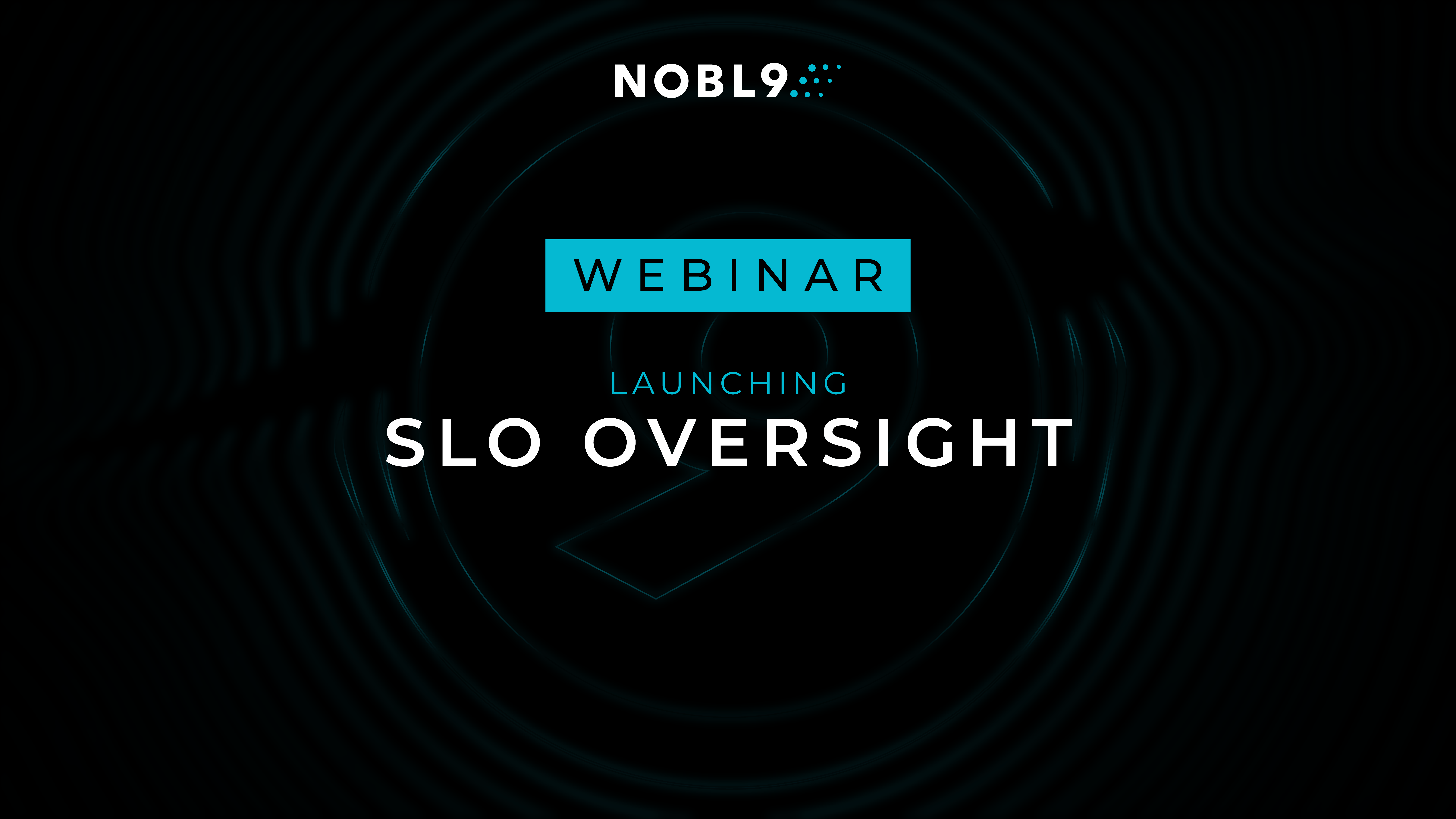More by Jeremy Cooper:
| Author: Jeremy Cooper
Avg. reading time: 4 minutes
I’ve been immersed in the world of software reliability since before the Site Reliability Engineering (SRE) movement—helping customers brainstorm, build, and manage ways to improve the customer experience. Now at Nobl9 I take great pleasure in helping customers gain the most value from using Service Level Objectives (SLOs).
SLOs help organizations streamline and focus reliability efforts, and that makes the task of delivering reliability much easier for developers and engineers.
I’ve learned a thing or two about how different companies approach the idea of getting started with SLOs, and I’d like to share a few of my favorite suggestions:
- Clearly articulate the value SLOs bring.
Most organizations are doing their best to make things as reliable as possible by whatever means necessary. But getting reliability is hard, especially when there is no clear goal. It’s like trying to win a football game with no playbook or scoreboard—you may have a team of talented players giving their best effort, but no one truly understands what the team is trying to achieve, much less how best to work together. That’s the value SLOs bring. SLOs are the language we use to set goals and give everyone on the team the same playbook.
SLOs should simplify the language that is used throughout the organization to describe technology and help various teams, departments or business units—even the non-technical ones—work together. SLOs help organizations streamline and focus reliability efforts, and that makes the task of delivering reliability much easier for developers and engineers. In a nutshell: Better reliability is achieved by working together toward common goals (SLOs), ultimately making all our jobs easier and more pleasant—that is the value that SLOs can bring.
Inherently, people are resistant to change. I definitely see this with the customers I have worked with. This includes companies that implemented SLOs but had not shifted to an SLO-based SRE culture and workflow.
I recall one customer who had created SLOs but were not enforcing error budgets or leveraging the burn rates and violations to make more informed decisions. As a result of this they were not impressed with what they thought SLO-based SRE was. After working with them and explaining that it’s more than just setting a threshold, we implemented new workflows that allowed them to gain value from their SLOs.
Not only that, SLOs play a huge role in their decision making process, from pre-production to feature release to infrastructure planning. I have found that clearly explaining the values of SLOs and laying out a roadmap that is inclusive of more than one team leads to a much better experience and ROI from your SLOs.
- Explain what SLOs are *not.* Sometimes it’s best to dispel misunderstandings before they become unhealthy myths. Be sure to head these misconceptions off at the pass:
- SLOs are not monitoring metrics. SLOs are goals that are wholly based on the user experience.
- SRE and DevOps are not job titles or projects that you complete in a quarter. Because customer expectations are always changing, SRE is a never-ending endeavor. It should be used proactively, and you should always consider adjusting SLIs/SLOs or adding new ones to your SRE mix.
More than once, I’ve encountered customers that initially thought SLO-based SRE was going to mean replacing their current monitoring tools. They were leery of the whole concept. SLO-based SRE is not about replacing your KPI generating tools. It’s about taking these KPIs, also referred to as SLIs, and giving them more value, by setting clear goals and thresholds. Once they understand that no one’s job is threatened and the benefits that having SLOs affords them, they are totally on board.
- Never fear: Your organization is never too young, too old, too small or too big to benefit from SLOs.
Yes, it’s true that older, larger, and more established companies generally have a harder time with change and taking on risk. But if that describes your organization, I’ve got good news: SLOs can help your organization overcome stasis and “status quo” thinking. SLOs can be the shot in the arm your enterprise needs to achieve lofty goals like digital transformation.
Are you ready to get started?
We’re here to help, and the Nobl9 platform is designed to make the process easy.
Sign up for a trial of the platform and give it a go on your own, but we’d love to play an active role in helping you get started and be a part of your SLO journey.
Here’s how we can help:
- Let’s talk. The Nobl9 team would like to know where you are in your SLO journey and what reliability efforts, if any, are already under way. Do you have monitoring systems? We’d like to hear more about what you are measuring and how. Most importantly, we want to hear about your critical user journeys, that is, what is most important to your customers. From this initial discussion, we’ll give you “an impact roadmap” for implementing a culture of efficient reliability.
- Next, let’s try out the Nobl9 platform! We’ll start with a “proof of value” exercise designed to give you the ammunition you need to help key decision makers in your organization see the value and ROI of an SRE strategy.
For starters, we’ll help you formulate an SLO declaration to describe a technical goal in customer-centric terms. We’ll pick a goal that will have business impact, determine an appropriate target, and set a measurement period for your newly created SLO. We will also discuss SLO alerts—including decisions about which teams need to be alerted and, more importantly, what their action steps should be for resolving the alert.
Mapping out SLOs can seem like a daunting task, especially if you aim for perfection right out of the gate. Don’t worry! That’s not what we’re after. It’s more important to get started somewhere, and then adjust as we learn. We’ll be right beside you, and the Nobl9 Platform will help us walk this path with ease until you quickly find yourself well on your way to using SLOs to improve the customer experience.
Needless to say, Nobl9 is passionate about SLOs, and we have a vested interest in your success. We’d love to hear from you and become a part of your continually evolving SRE journey.
Engage with us on Twitter, or visit Nobl9.com/signup.
Image from Nejc Soklič on Unsplash





.png)




.png?width=1200&height=628&name=Building%20Reliable%20E-commerce%20Experiences%20(42).png)
.png?width=1200&height=628&name=Building%20Reliable%20E-commerce%20Experiences%20(34).png)






Do you want to add something? Leave a comment